A Complete History of Money and Inflation in the United States
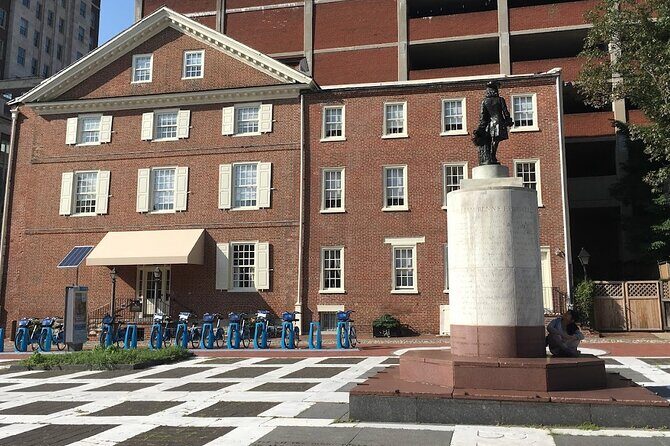
Imagine walking through Philadelphia, a city bursting with American history, and discovering the story behind how our money evolved—from gold coins to digital transactions. This tour, costing only $29 per person, offers a unique lens on the financial story of the U.S., with a focus on money’s history, inflation, and the founding fathers’ economic ideas. In just about 75 minutes, you’ll visit iconic sites like the Museum of the American Revolution, Independence Hall, the U.S. Mint, and the grave of Benjamin Franklin. Led by a passionate Philadelphian, this tour promises to be an engaging mix of education and storytelling.
What we love about this experience is the way it combines Philadelphia’s rich historical landmarks with a focus on money and economics, making history feel relevant today—especially as we wonder about rising prices and inflation. We also appreciate that the tour is affordable, with a mobile ticket and pickup options, making it easy to join. A potential drawback is that you only see the exteriors of the sites—no interior visits—which might limit those wanting an in-depth museum experience.
This tour suits history buffs, economics enthusiasts, and curious travelers who want a quick yet insightful journey through American financial history. It’s especially good for those who enjoy stories connecting past and present, offering perspectives on how our monetary system was designed by the founding fathers and how it impacts us today.
Key Points
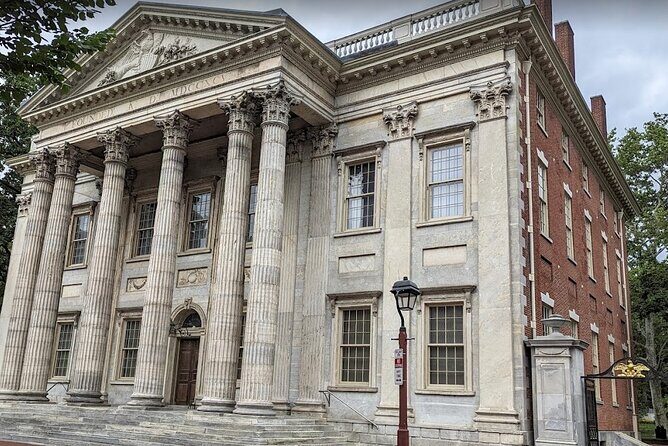
- Affordable and concise: This tour offers a compact, budget-friendly way to connect American history and money.
- Focus on iconic sites: Stops include major landmarks like Independence Hall and the U.S. Mint.
- Educational and engaging: Led by a local guide passionate about history and economics.
- Exterior visits only: You’ll see the sites from the outside without entry, which keeps it quick and accessible.
- Insight into inflation and money’s evolution: Learn how America’s monetary system was shaped and how it relates to today’s economic climate.
- Great for a general overview: Ideal if you’re short on time but want a meaningful historical experience.
Interested in history? Here are other past-focused experiences we've examined in Philadelphia
A Thorough Look at the Tour Experience
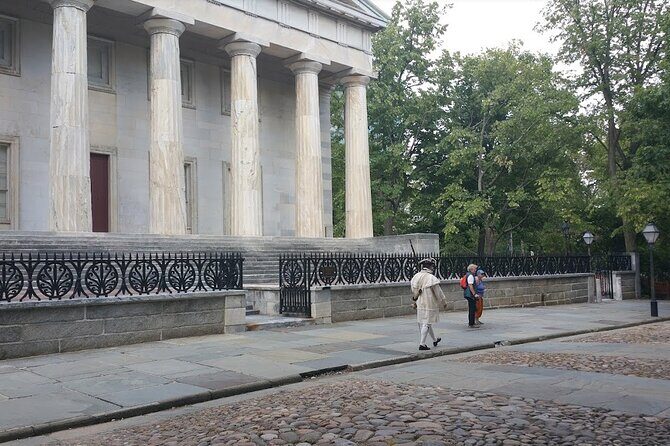
Starting Point and Logistics
The tour begins at 129 Sansom Walk at 10:00 am, making it easy to incorporate into a morning of sightseeing. With a maximum group size of 12, you’re likely to get a personalized experience, and since pickup is offered and a mobile ticket system is used, it’s straightforward to join without fuss. The tour ends near the Liberty Bell and the National Constitution Center, making it convenient to continue exploring Philadelphia afterward.
What to Expect at Each Stop
Museum of the American Revolution
We love how the tour starts with the Museum of the American Revolution, where the guide shares stories about two murals on the wall. Though you only view the exterior, the murals serve as visual gateways into the revolutionary period, setting the stage for understanding how the early American economy was intertwined with independence. Since the admission ticket isn’t included, you might choose to explore further on your own later.
First Bank of the United States
Next, a quick look at the First Bank of the United States building’s exterior reveals an important chapter in American financial history. Built in 1791, it was America’s first attempt at a national banking system, reflecting the young nation’s efforts to establish fiscal stability. The guide might share stories about Alexander Hamilton’s role in founding this bank—crucial in shaping U.S. economic policy.
Second Bank of the United States
Similarly, the Second Bank’s exterior offers insight into the evolution of American banking, becoming a symbol of both economic growth and political tension. Its architecture and location help tell the story of how the nation grappled with issues of currency, stability, and inflation in the early 19th century.
Independence Hall
We appreciate the external view of Independence Hall, where the Declaration of Independence was signed. Here, the guide connects the founding fathers’ ideas about money and governance—highlighting how economic principles influenced the fledgling republic’s policies. It’s a significant site, not just for its political history but also for understanding the economic independence that was envisioned.
U.S. Mint
The U.S. Mint is a highlight—we only see its exterior, but it’s fascinating to think about how this building has been producing coins since 1792. The guide discusses how coinage has evolved and how the mint’s operations reflect the stability or inflationary pressures of different eras.
Benjamin Franklin’s Grave
A short stop at Franklin’s grave gives a personal touch. Franklin, a founding father, was also deeply involved in financial innovations and civic projects. The guide shares stories about his contributions, linking his ideas about frugality and civic virtue to America’s economic principles.
National Constitution Center
Finally, the tour concludes with a 15-minute exterior visit to the U.S. Constitution Center, where the guide discusses how the Constitution laid the groundwork for economic policy and monetary authority, especially in how Congress manages the nation’s money supply and inflation.
Why This Tour Offers Good Value
At just $29, the experience provides a focused, well-organized overview of Philadelphia’s key historical sites related to the financial history of the United States. Since admission tickets are not included, you can choose to explore the interiors later at your own pace—saving money while still gaining context. The emphasis on exterior views allows for a quick, efficient walk that respects your limited travel time but still delivers meaningful stories about money’s role in shaping the nation.
Led by a passionate local guide, you’ll hear stories that connect history, architecture, and economics—not just dry facts but engaging narratives that make the past come alive. The tour’s design to highlight the relationship between foundational American principles and economic development helps make the complex history of inflation, currency, and banking accessible.
How It Compares to Similar Experiences
Compared to full museum visits or longer historical walks, this tour is excellent for travelers who want a quick, insightful overview without spending hours inside museums. It’s especially appealing if you’re interested in American history, monetary policy, or economics, but are limited on time or budget.
Who Will Benefit Most
This experience is ideal for history lovers, students of economics, or anyone curious about how the U.S. dollar came to be and why inflation matters. It’s perfect for those seeking a cost-effective, meaningful glimpse into Philadelphia’s significance in the story of American money. If you enjoy stories that connect past ideas to current issues, you’ll find this tour both informative and thought-provoking.
Final Thoughts: Is It Worth It?
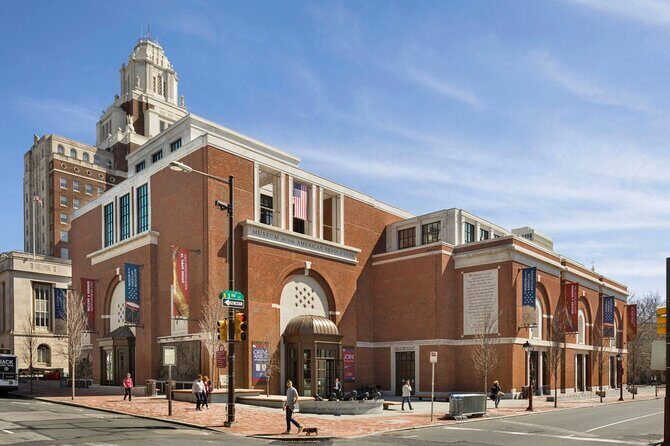
Absolutely, if you’re looking for a short, engaging, and inexpensive tour that combines Philadelphia’s historic landmarks with a focus on the financial history of the U.S. It’s a smart choice for travelers who want a compact experience that adds depth to their understanding of American independence—not just political but economic as well.
While it doesn’t include interior visits to the sites, this can be a good thing: it keeps the tour moving briskly and respects your time. Plus, the exterior architecture and stories are enough to spark your curiosity to explore further on your own.
For value-conscious travelers who want to connect history with current economic issues, this tour delivers more than just facts—it’s about understanding how money and inflation have shaped the nation and our daily lives.
FAQ
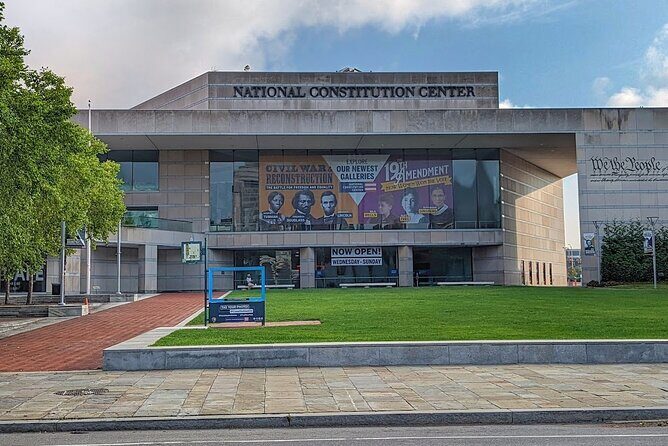
Is this tour suitable for children?
Yes, the tour is designed for most travelers, and since it’s a walking exterior visit, it’s suitable for kids who can walk and listen to stories about history and economics.
Do I need to purchase tickets for the sites?
No, the tour only covers the exteriors of the sites. You can explore inside later if you wish, but admission tickets are not included in the tour price.
What should I wear?
Comfortable walking shoes are recommended since you’ll be outside and walking between sites. Philadelphia’s weather varies, so check the forecast and dress accordingly.
Are there any age restrictions?
Most travelers can participate, but the tour is suited for those interested in history, economics, and storytelling.
How long is the tour?
It lasts approximately 1 hour and 15 minutes, making it a concise way to get an overview without feeling rushed.
Is transportation included?
Transportation is not provided, but the locations are within walking distance, and the tour starts and ends near public transit options.
Can I cancel if my plans change?
Yes, cancellations are accepted up to 24 hours in advance for a full refund, offering peace of mind.
This tour offers a wonderfully accessible way to grasp the financial backbone of American history, perfect for those who want a balanced mix of storytelling, history, and practical value. Whether you’re a history enthusiast or just curious about why prices are rising today, it’s a small investment that can give you a bigger picture of America’s currency story.
More Historical Tours in Philadelphia
- 2.5 Hour Philadelphia History Tour with Washington War Tent Show
- Philly Gayborhood and LGBTQ History Walking Tour
- Audio Journey Through History: A Philadelphia Heritage Walk
- Private Philadelphia French/English Historical and Architectural Walking Tour
- One Hour Tour Of Philadelphia Historical Sites In A Vintage Car
- True Crime Philadelphia and History Tour
More Tour Reviews in Philadelphia
- 2.5 Hour Philadelphia History Tour with Washington War Tent Show
- Seafood & Handmade Pasta Class in Central Philadelphia (4-Course)
- Secret Bars and Favorite Spots Walking Tour in Philadelphia
- Philadelphia Secret Food Tour of Reading Market and Center City
- BYOB Historically Hilarious Trolley Tour of Philadelphia
- Holiday Lights Trolley Tour
More Philadelphia experiences we've covered
- 2.5 Hour Philadelphia History Tour with Washington War Tent Show
- Seafood & Handmade Pasta Class in Central Philadelphia (4-Course)
- Secret Bars and Favorite Spots Walking Tour in Philadelphia
- Philadelphia Secret Food Tour of Reading Market and Center City
- BYOB Historically Hilarious Trolley Tour of Philadelphia
- Holiday Lights Trolley Tour
- Philadelphia Airport (PHL) to Philadelphia – Round-Trip Private Transfer
- Philadelphias Founding Fathers Walking Tour
- Philadelphia Scavenger Hunt and Highlights Self-Guided Tour
- Hop-on Hop-off and Philly By Night Tour Combo
- Scavenger Hunt Adventure in Allentown by Wacky Walks
- Explore Philly’s Highlights on a Private 4h Walking Tour
